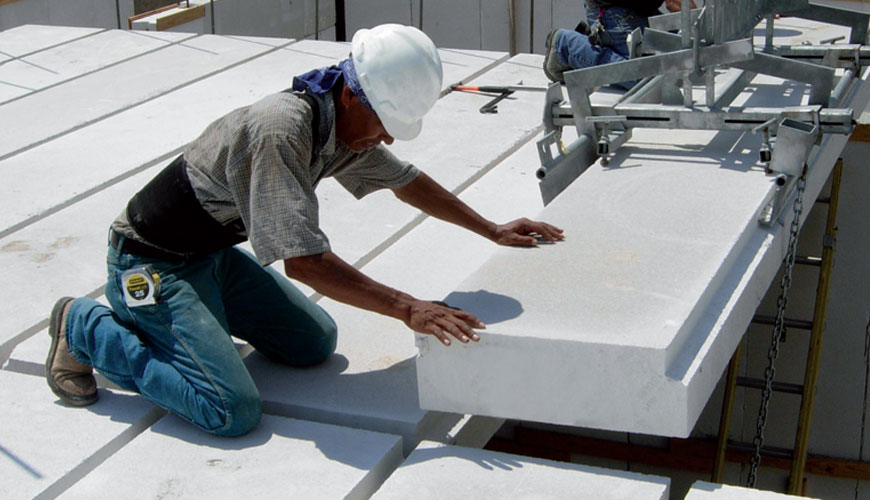

EUROLAB, with its state-of-the-art accredited laboratories and expert team, provides precise and fast testing services within the scope of EN 15304 testing. This standard covers a method for determining the freeze-thaw resistance of autoclaved aerated concrete manufactured according to EN 12602 or EN 771-4.

Cubic test specimens (two equal sets of main test specimens and reference test specimens) are cut from sampled products from normal production, saturated in water (48 ± 1) hours, removed, and then placed in polyethylene bags or the like that protect them from drying out.
The main test specimens are subjected to repeated freezing at (–15 ± 2)°C for at least 8 hours, followed by thawing for at least 95 hours in an environment >20% RH and (2 ± 8)°C. Reference test specimens are stored in the conditioning chamber at (20 ± 5)°C under conditions that prevent the AAC from drying out during storage.
After the specified number of freeze-thaw cycles (at least 15), the mass loss of the main test samples is determined. Dry density and moisture content are also determined on reference test samples.
Test specimens should be cut by means of a rotating diamond or carborundum blade or similar equipment. Their surface should not deviate from flatness by more than 0,5 mm. Flatness should be checked along the two diagonals using a straight edge and, if necessary, 0,5 mm feeler gauge.
When using test specimens for the determination of compressive strength, their load-bearing surfaces must not deviate from flatness by more than 0,1 mm, and the angle between the load-bearing surfaces and adjacent surfaces must not deviate more than 1 mm from the right angle. If necessary, a square along both orthogonal center axes of the load bearing surfaces should be checked with a 1 mm feeler gauge or similar instrument.
An equal number of test specimens shall be prepared from the upper third, middle and lower third of the specimen in the direction of mass rise during manufacture. Test specimens should be cut in pairs (main test specimens and reference test specimens) from adjacent areas of the specimen to ensure good comparison.
This calculation is based on the loss in oven-dry mass of the main test samples. This is determined from the difference between the initial kiln-dried mass (calculated assuming the main test samples have the same initial moisture content as the adjacent reference test samples) and the final kiln-dried mass determined directly on the main test samples.
EUROLAB assists manufacturers with EN 15304 test compliance. Our test experts, with their professional working mission and principles, provide you, our manufacturers and suppliers, the best service and controlled testing process in our laboratories. Thanks to these services, businesses receive more effective, high-performance and quality testing services and provide safe, fast and uninterrupted service to their customers.
To get an appointment, to get more detailed information or to request an evaluation, you can ask us to fill in our form and reach you.